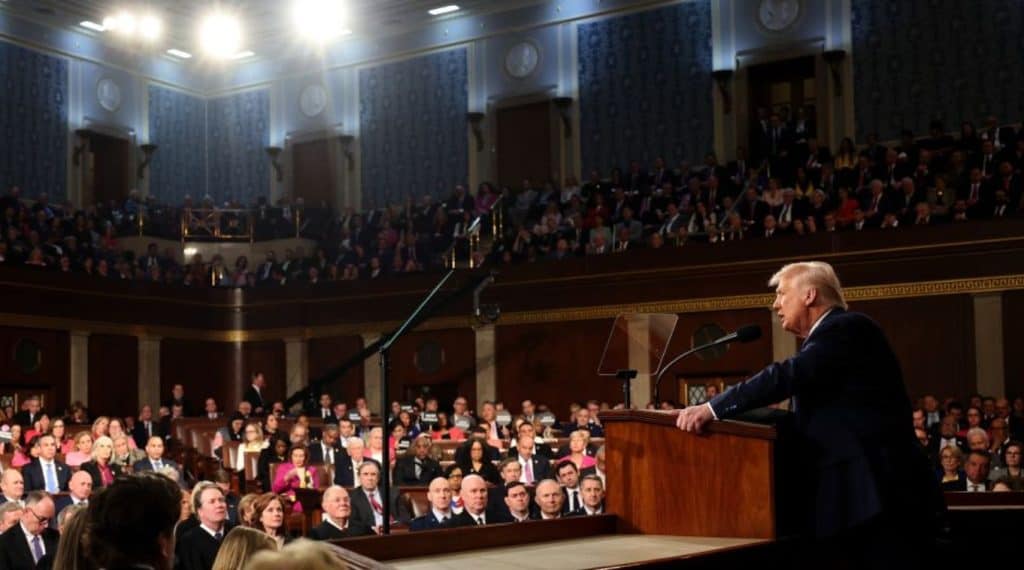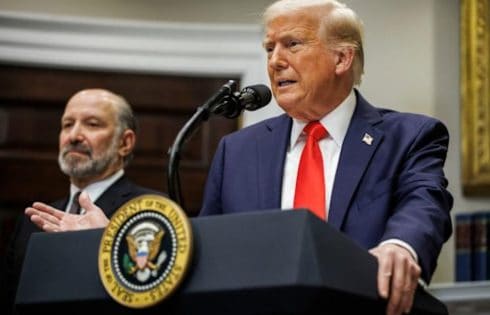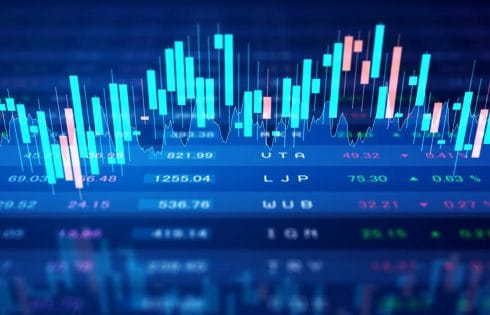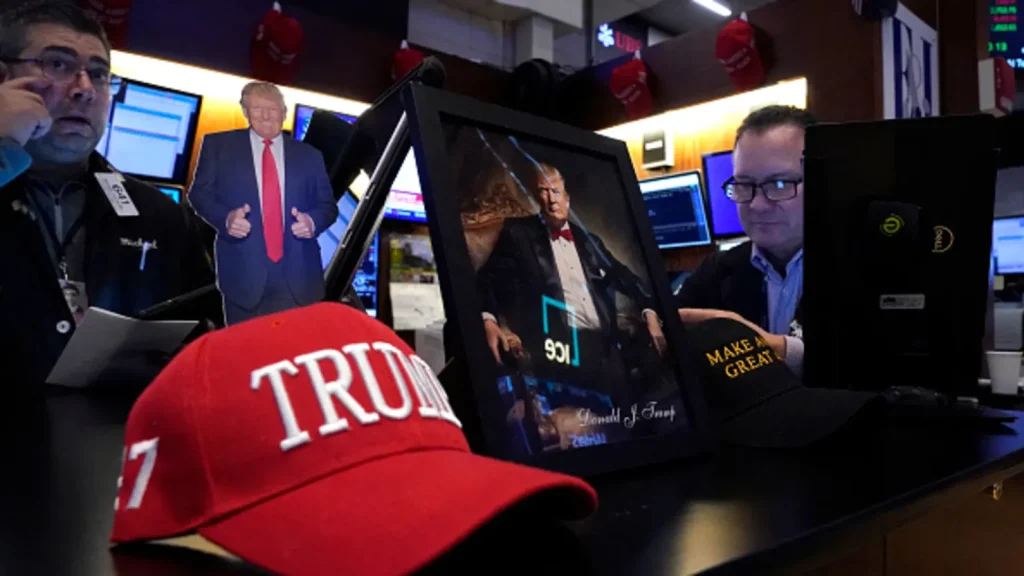Financial planner urges calm amid market uncertainty






In continuing coverage on the Canada, Mexico, and China tariffs imposed by President Donald Trump, News 8 spoke to a financial expert for the impacts not only occurring on Wall Street, but also the potential changes to your day-to-day expenses.
The stock market took a significant tumble Tuesday morning, hours after the tariffs took effect.
“There always has to be patience when it comes to investing. What’s really hard about this timeline is we have some dates and ideas, but is this a negotiation tactic? Will these go in place? If and when they do – how long will they be in place for? Will we see the percentage of tariffs into the future if we don’t see results?” said Ethan Wade, chief development officer for Brighton Securities.
Wade also spoke on the ripple effects the tariffs will have not only on investors, but for the average consumer.
“These tariffs ultimately mean our auto prices will likely go up. Our produce prices will likely go up – your strawberries, bananas, avocados – you’re very likely to see price increases there. Our energy prices are going to go up – and for Americans who have already, for a number of years, have been struggling at the supermarket… the idea that we may have to struggle a little bit more and that things may get even harder than they’ve been is incredibly unsettling,” said Wade.
While the exact timeline of the tariffs are loose, Wade gives advice on the uncertainty surrounding the future impacts on Americans.
“While we have a loose timeline, there still exists a significant amount of uncertainty and when you have that amount of uncertainty, you have to have patience, and we don’t want to react. It’s always best to be proactive rather than reactive,” said Wade, “It’s when we don’t know [and when the average citizen] can’t get an idea of the impact of this. We always think worst case scenario and often, we think it isn’t as bad as it seems, and it also is as good as it seems, there’s usually some middle ground there”.
When it comes to energy bills, News 8 reached out to the New York ISO, the team dedicated to overseeing the state’s grids. A spokesperson said in part, “The U.S. and Canada have one of the most integrated electric grids in the world, allowing system operators in both countries to pool resources for improved reliability and economic efficiency.” The spokesperson added, “The NYISO anticipates having adequate supplies to meet expected demand on the system”.

President Donald Trump will “probably” announce tariff compromise deals with Canada and Mexico soon, Commerce Secretary Howard Lutnick said Tuesday.
The potential agreements would likely involve scaling back at least part of Trump’s brand new 25% tariffs on imports from Mexico and Canada, he added.
Lutnick’s comments came minutes after the U.S. stock market limped to a close for a second day of sharp declines, spurred at least in part by investors’ fears that Trump’s aggressive policies will ignite a crippling trade war.
After his remarks, U.S. stock futures tied to all three major averages rose.
The compromises with Canada and Mexico will likely be revealed as soon as Wednesday, Lutnick said on “Fox Business.”
While the Cabinet secretary did not specify what Trump would agree to, he suggested the U.S. president would be willing to meet Canada and Mexico “in the middle.” He also appeared to foreclose on the possibility that Trump would lift the tariffs entirely.
The Trump administration on Tuesday reimposed sweeping 25% tariffs on Canadian and Mexican imports after putting them on pause for a month.
Trump, who has held up tariffs as an all-powerful negotiating tool, based the policy on allegations that the neighboring countries were failing to stem the flow of drugs and crime into the U.S.
“Both the Mexicans and the Canadians are on the phone with me all day today, trying to show that they’ll do better,” Lutnick said Tuesday afternoon.
“And the President is listening because, you know, he’s very, very fair and very reasonable. So I think he’s going to work something out with them,” he said.
Lutnick described a deal in which Canada and Mexico agree to “do more,” at which point Trump would “meet you in the middle some way.”
“We’re going to probably be announcing that tomorrow,” he said.
Lutnick said the announcement would not be another pause.
The comments came hours before Trump was set to deliver a primetime address to a joint session of Congress.

D-Wave Quantum surged 64% over the last quarter, coinciding with key developments that likely influenced investor sentiment. A pivotal collaboration with the Jülich Supercomputing Centre saw the latter acquiring D-Wave’s Advantage quantum computer, enhancing D-Wave’s standing in high-performance computing. This marked a significant technological advancement, especially with the expected integration into JUPITER exascale computing. Additionally, D-Wave’s strategic move to provide on-premises Advantage systems bolstered its appeal amidst rising demand for on-site quantum computing solutions. Concurrently, the launch of the “Quantum Uplift” program aimed to capture a larger market share by incentivizing transitions from competitor systems. Meanwhile, as broader markets saw a decline due to new U.S. tariffs and economic uncertainty, D-Wave’s positive announcements were indicative of growth potential, appealing to investors despite the broader downward market trend. Overall, such strategic initiatives and technological advancements likely supported the positive price trajectory of D-Wave Quantum.
Over the past year, D-Wave Quantum’s total shareholder returns surged 242.66%. This impressive performance stood out against the broader market, which saw a 15.3% increase, and the software industry, which grew 4.4%. Key milestones during this period include D-Wave’s inclusion in the Russell 2500 and S&P Software & Services Select Industry Index in July 2024, which may have enhanced investor visibility. The company also launched a hybrid quantum solver capable of managing up to 2 million variables in June 2024, significantly advancing its technological capabilities. Additionally, D-Wave maintained its NYSE listing standards as of November 2024, addressing previous compliance concerns.
D-Wave conducted a follow-on equity offering totaling US$150 million in early 2025, further securing capital for growth. Investor confidence might have been reinforced by executive changes, including the appointment of Sharon Holt to the Board in November 2024, bringing added expertise in technology and business. These cumulative efforts likely played a role in sustaining the company’s robust returns over the year.



